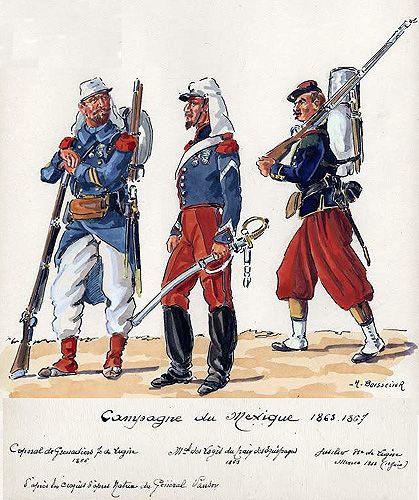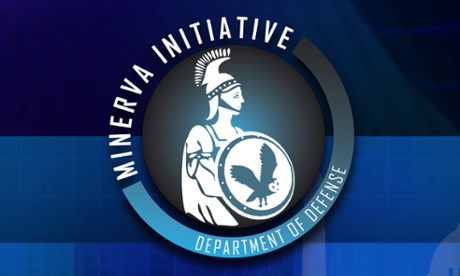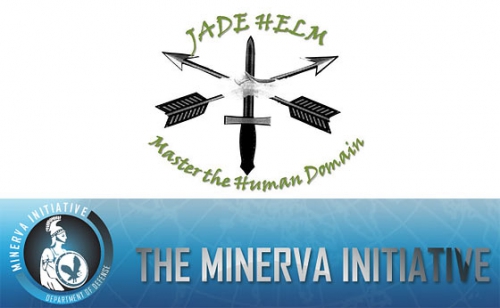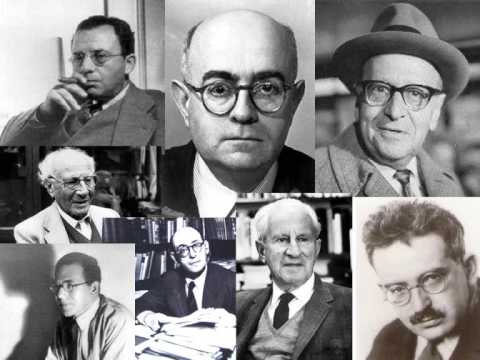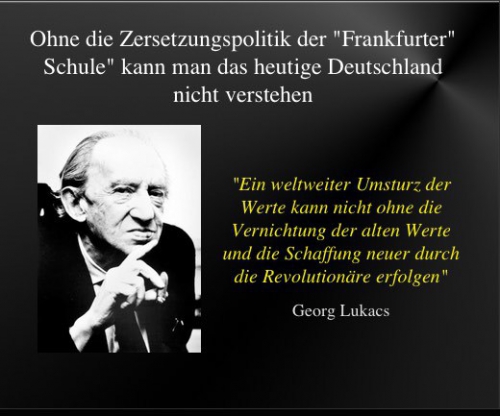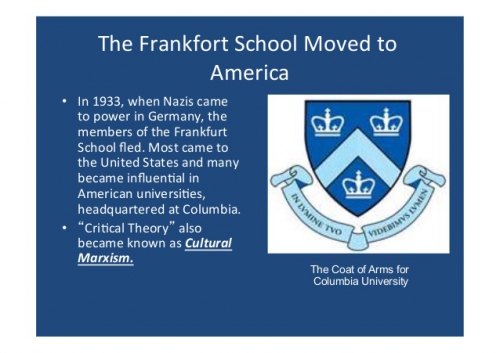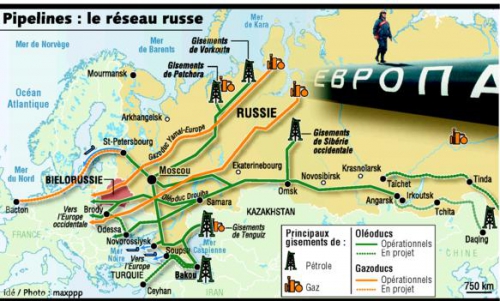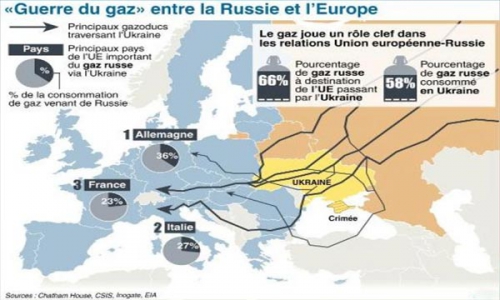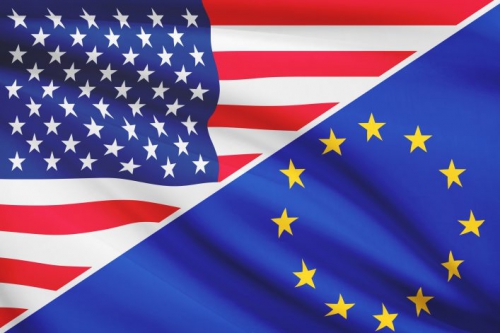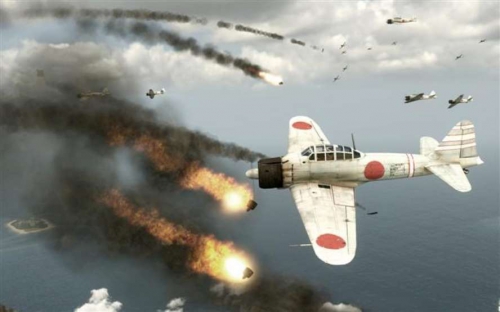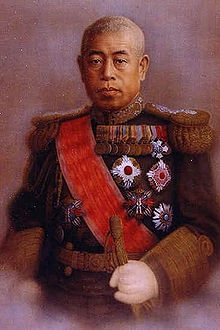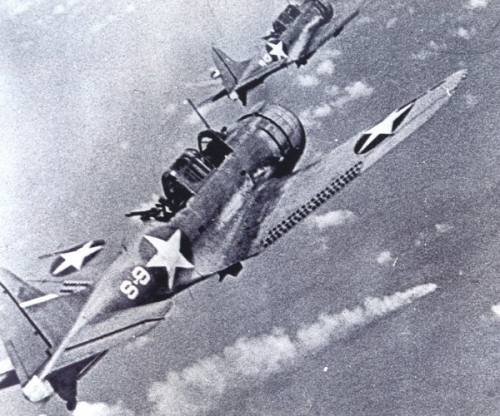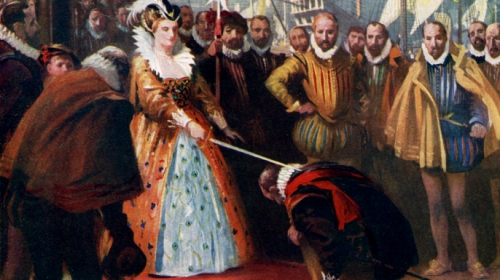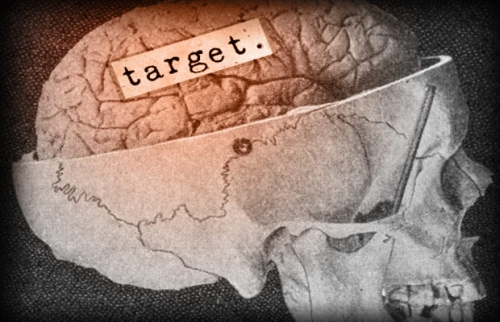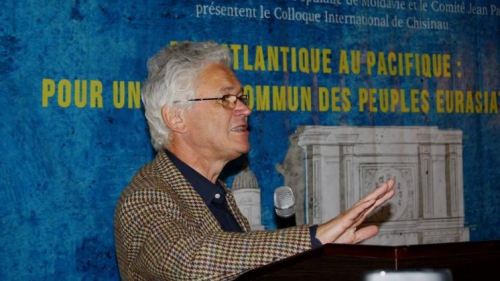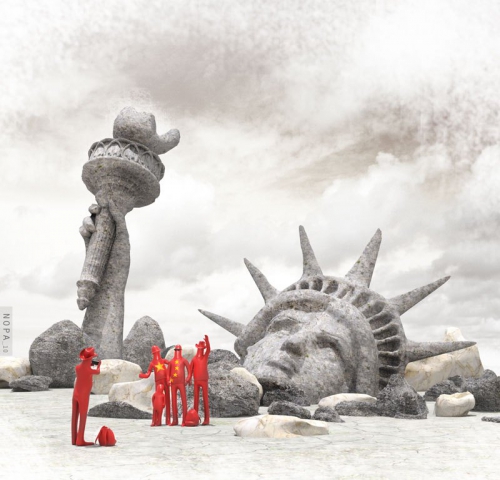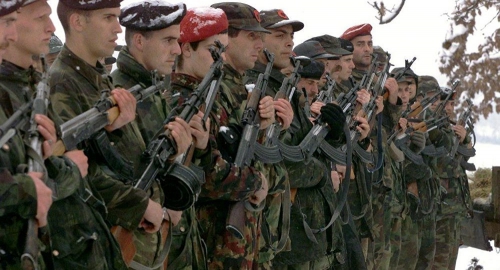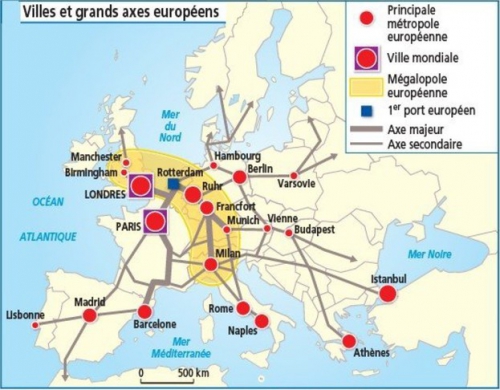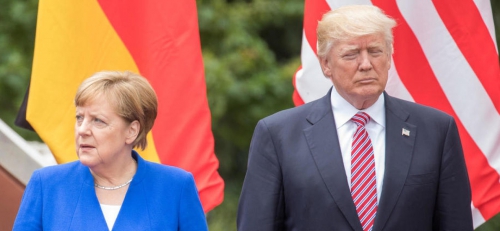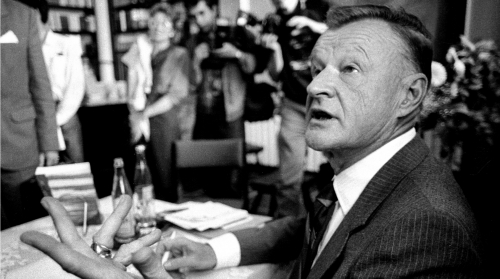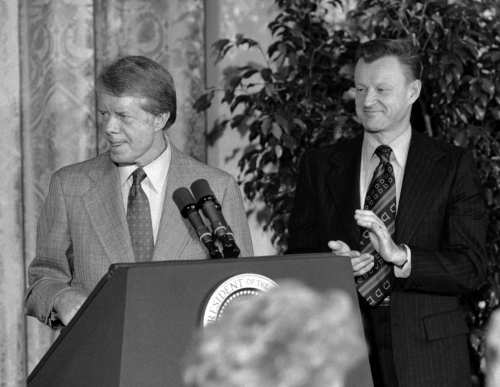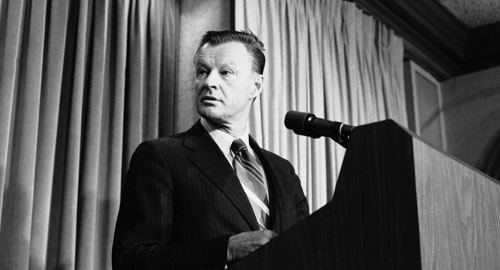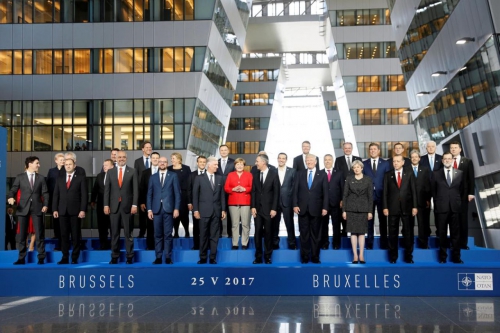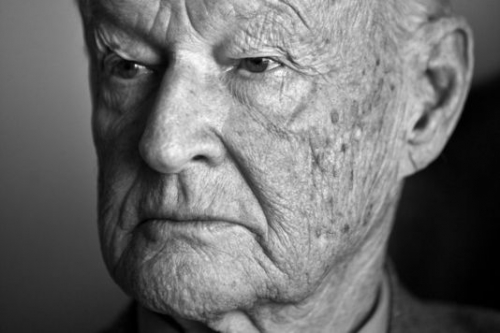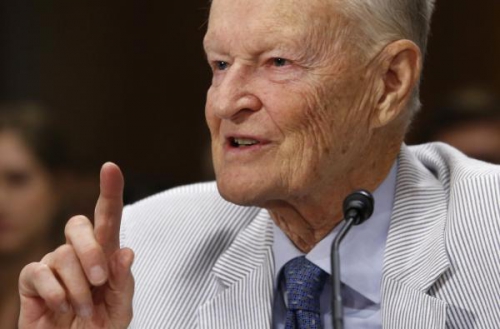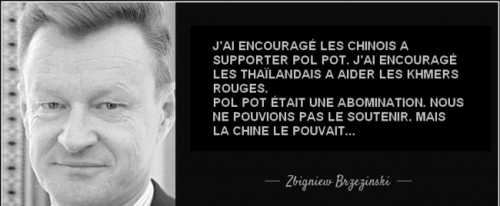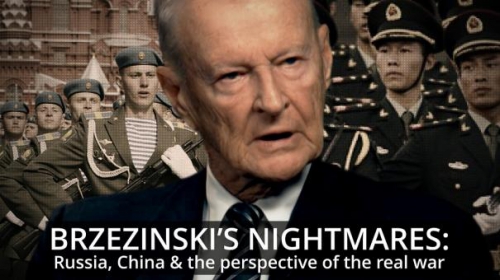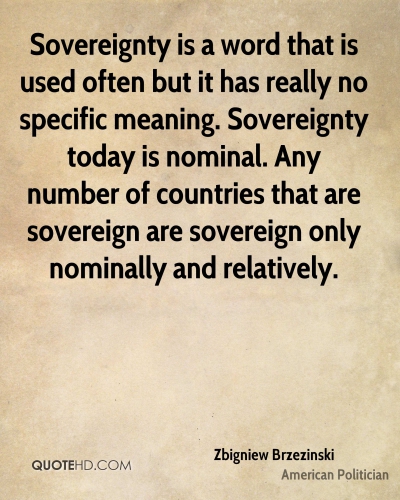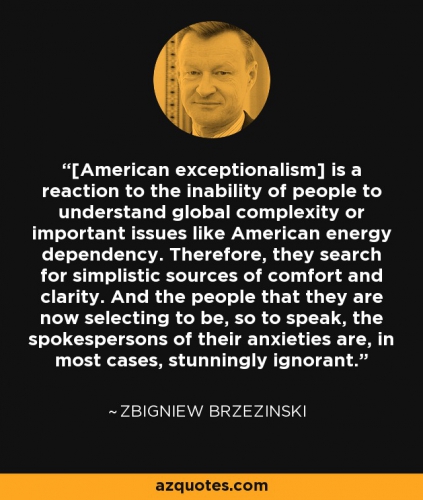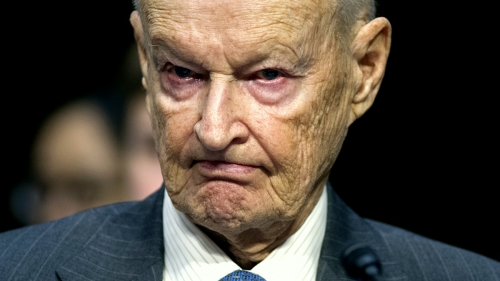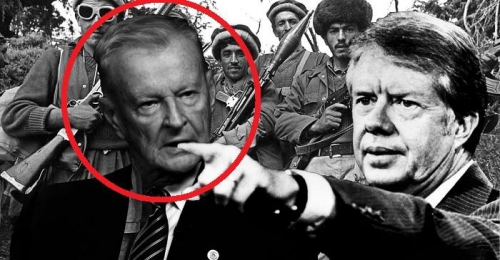Chisinau, colloque des 26 et 27 mai 2017
Colonisation juridique et liberté des peuples
Pour un nouvel ordre juridique
Ex: http://www.geopolitica.ru
La globalisation économique est-elle l’autre nom de la colonisation juridique américaine ?
Au nom d’une efficacité usurpée, d’une performance imaginaire, et du droit du plus fort, le modèle juridique américain entend s’imposer comme le modèle universel du droit des affaires, du commerce et du marché mondialisé. Sans doute préférable à d’autres, l’arme du droit est mobilisée sans faiblesse au service de l’intérêt américain. Les bénéfices pour l’industrie juridique américaine sont énormes ; plusieurs dizaines de milliards d’amendes chaque année. Les bénéfices stratégiques le sont davantage, qu’ils viennent de l’affaiblissement de concurrents gênants, du pillage de leurs secrets industriels ou commerciaux, de la peur de l’inculpation pénale provoquée chez leur dirigeants. Les risques, pour être lointains, n’en sont pas moins énormes. L’extraterritorialité du droit américain est contraire au principe de souveraineté des Nations et d’égalité en droit des Nations, comme du droit des peuples à disposer d’eux-mêmes, principes sur lesquels reposent et la communauté internationale, et la paix. La prétention du procureur américain à faire régner partout dans le monde le droit américain est contraire à la seule source de légitimité du droit, qui est la volonté des peuples souverains de décider du droit qui s’applique sur leur territoire, à leurs activités économiques et aux sociétés qui sont actives auprès d’eux.
Le débat sur l’extraterritorialité du droit américain, tel que le vivent les entreprises européennes et françaises, est à cet égard emblématique d’un conflit de civilisation. Il oppose la reconnaissance de la diversité des sociétés humaines et des systèmes juridiques, comme expression de la liberté politique, à un idéal d’uniformisation du monde dicté par les intérêts de la finance de marché et du rendement du capital. Ce conflit en réalité n’oppose pas une civilisation à une autre. Il oppose la civilisation elle-même, qui n’existe pas sans la diversité des civilisations ( selon Claude Lévi-Strauss), à une nouvelle forme de barbarie, portée par l’intérêt manifeste de ceux qui se croient élus pour diriger le monde, et qui menace rien moins que la survie de l’humanité.
Voilà pourquoi les sanctions américaines contre des entreprises françaises et européennes méritent l’attention. Elles révèlent une stratégie de mobilisation du droit dans la guerre économique, qui se traduit par un changement de nature du droit. IL n’est plus l’expression de peuples souverains, il est placé sous la dépendance de l’économie et de la géopolitique. Le droit serait ce qui sert l’économie. Il serait ce qui assure aux pouvoirs invisibles de la finance et des réseaux criminels une emprise de plus en plus complète sur les démocraties occidentales, à la faveur du sans frontiérisme, de l’individualisme radical et de l’idéal nomade des déracinés. Il serait ce qui ne connait ni territoire, ni Nations, pas plus que de limites ni d’appartenances. Une telle évolution appelle une analyse de la transformation contemporaine du capitalisme, et de la doctrine du chaos qui met fin à ce que nous avons cru nommer « Occident », depuis Jérusalem, Athènes, Rome et Byzance, une analyse essentielle pour organiser la résistance et préparr la libération à venir.
1 – Une étrange soumission
Différentes lois, adoptées notamment dans les années 1990 après le scandale lié à la corruption de dirigeants de plusieurs Etats par la firme d’aéronautique de défense Lockeed-Martin, illustraient l’exemplarité américaine ; si certains devaient terrasser la corruption, c’étaient les Etats-Unis d’Amérique ! Cet objectif de moralisation du commerce international sous l’égide du Department of Justice ( DOJ) a donné lieu, notamment, au vote de la loi dite « Foreign Corrupt Practices Act » (FCPA) dont la première rédaction visait explicitement les faits de corruption d’agents publics étrangers par les sociétés américaines.
D’autres lois cherchaient à aligner les partenaires commerciaux des Etats-Unis sur leurs embargos contre Cuba, l’Iran, le Soudan, et autres représentants désignés de « l’axe du mal ». La logique est intelligible ; « vous ne pouvez pas faire des affaires avec nous et avec nos ennemis ». Elle a été démentie de multiples fois, par les entreprises américaines elles-mêmes, dont beaucoup savent fort bien travailler avec l’Iran, la Russie, et autres incarnations du Mal ( de Bell Helicopters à Chrysler et General Electric, la liste est longue). Est-ce pour cette raison qu’elle a eu peu de succès, une Union européenne pour une fois résolue et unie ayant obtenu des reculs significatifs de l’application des lois d’Amato et Helms-Burton, respectivement contre Cuba et l’Iran ?
Dans le même temps, celui de la globalisation et donc de l’affrontement de plus en plus direct entre intérêts privés et intérêt national, les Etats-Unis renforçaient la protection de leur épargne nationale et plus encore, des entreprises jugées stratégiques. L’objet de « the office of foreign asset control » (OFAC) et de ses moyens d’investigation étendus, consiste pour l’essentiel à s’informer de toute entrée au capital ou prise de contrôle étranger d’entreprises ou d’activités américaines, et, le cas échéant, de manière discrétionnaire, sans justification nécessaire ni débat contradictoire, à bloquer prise de participation ou rachat. L’Ofac s’est récemment illustré en interdisant à Port Dubaï Authority d’acquérir le contrôle de ports de commerce aux Etats Unis, et en interdisant à une firme d’énergie chinoise l’achat de sources d’énergie aux Etats-Unis.
Les années 2000 ont vu une transformation progressive de la doctrine et des pratiques du système judiciaire américain. Les poursuites engagées contre des sociétés étrangères, pour des opérations hors du territoire des Etats-Unis, se sont multipliées et continuent de se multiplier ( elles sont publiées sur le site du DOJ). Il suffit pour cela qu’un critère de rattachement établisse la compétence du procureur américain, et la liste est longue, qui va de l’emploi du dollar, dont les chambres de compensation sont toutes situées aux Etats-Unis, jusqu’à l’utilisation d’une puce ou d’un logiciel sous licence américaine, ou d’un moteur de recherche dont les serveurs sont situés aux Etats-Unis !
Trois raisons majeures à cette utilisation du droit comme arme économique ; d’abord, l’idée généralement répandue qu’à un terrain de jeu unique, le monde, ne peut s’appliquer qu’une seule règle du jeu, la meilleure, celle des Etats-Unis. L’exceptionnalisme américain trouve pleinement à s’exprimer ; il ne saurait exister qu’une seule loi, et elle est américaine ! Autrement dit ; ce qui est bon pour les Etats-Unis est bon pour le monde, et que périssent ceux qui ne reconnaissent pas le peuple élu ! La notion répandue de « marché du droit » couvre en réalité un monopole du droit.
Ensuite, constat ou théorie, l’idée que la corruption alimente ces zones troubles du monde où ne règne pas la lumière protestante de l’aveu, de la transparence et de la pureté, et que, latins, arabes, chinois, africains ou russes, tous ces mercantis des bazars et des souks doivent être soumis à la loi ou sortis du jeu global. L’Amérique est la Nation indispensable sans laquelle le monde serait voué au désordre. 50 millions d’Africains réduits en esclavage et combien de millions d’Indiens exterminés en témoignent.
Enfin, la volonté géopolitique si bien exprimée par George W Bush et que son successeur ne démentira pas ; entre le Bien et le Mal, il faut rendre effective la grande séparation, il faut que pas un dollar, pas une arme, pas un litre de pétrole ne circule, et le droit doit y procéder. Aucune légitimité, aucune souveraineté, et surtout pas le droit international, ne saurait prévaloir contre le Bien incarné par les Etats-Unis. Qui défend le Mal ? La rupture avec les principes d’égalité en droit des Nations et de respect de leur souveraineté ne saurait être plus grande ; Alain de Benoist, dans « Carl Schmitt actuel », développe la logique qui conduit aux guerres d’extermination et fait de la paix la continuation de la guerre.
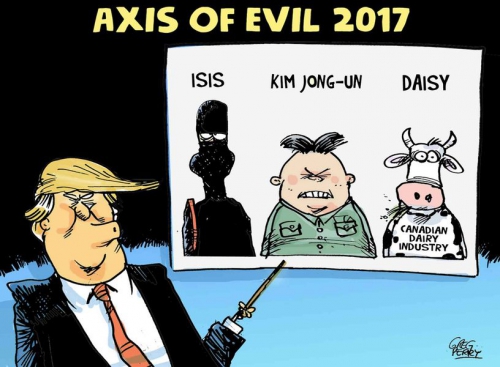
Les résultats concrets de l’évolution de la doctrine américaine et de la mobilisation de l’arme juridique dans l’affrontement mondial engagé sont connus, même s’ils sont étonnamment peu commentés.
En huit ans ( 2008-2016), au titre de sanctions directes ou indirectes procédant du non-respect d’embargos ( BNP-Paribas, par exemple), de faits de corruption d’agents étrangers ( Alstom, Total, Technip), de règles de marché ( Crédit agricole, Société Générale), les entreprises françaises auront payé plus de 15 milliards de dollars d’amende, pour l’essentiel au Department of Justice américain qui se voit ainsi doté de ressources significatives pour financer et amplifier son action. C’est ainsi que la première société russe, une société de télécommunications, condamnée pour faits de corruption à la suite de plaintes conjointes du procureur néerlandais et du procureur américain, pour des opérations en Asie centrale, a dû s’acquitter en 2016 d’une amende de 400 millions de dollars aux Pays-Bas, et de 400 millions de dollars aux Etats-Unis…
Les amendes acquittées par les entreprises ne sont que la partie émergée du coût effectif des sanctions.
Quand une entreprise négocie avec la justice américaine, l’accord qui met fin au procès comporte une première condition ; que l’entreprise prenne les dispositions nécessaires pour mettre fin aux pratiques jugée et condamnées. En d’autres termes, qu’elle se mette en conformité avec les lois américaines. Et qu’elle emploie pour cela des avocats, des consultants, des auditeurs, choisis sur une liste aimablement fournie par le DOJ, tous américains ou dépendant de structures américaines, l’exigence pouvant aller jusqu’à l’installation dans les murs de l’entreprise d’un « monitor » dont la fonction sera d’exiger tout document, d’avoir accès à toute information pouvant révéler des comportement contraires à la loi américaine (à ce jour, cinq entreprises françaises subissent la présence de tels « collaborateurs » dans leurs sièges sociaux). Une entreprise industrielle européenne a estimé à trois fois le montant de l’amende, ce que monitor et spécialistes de la « compliance » lui ont coûté.
A combien chiffrer le coût de l’espionnage des données commerciales, financières, stratégiques, et le pillage auquel les prestataires agréés par le DOJ soumettent les entreprises qui leur ouvrent leurs portes ? Peu de dirigeants dans le monde connaissent les principes du droit pénal américain. Qui oublie qu’à la différence d’un avocat français qui défend son client, son client seulement, et peut même lui conseiller de mentir à la justice, un lawyer américain est le représentant de la loi et est tenu de révéler à la justice les atteintes à la loi dont son client serait coupable ? Qui sait que tout prestataire américain ayant connaissance d’opérations ou d’actions hostiles à l’intérêt national américain est tenu de les déclarer à la justice américaine, sans en informer son client, sous peine d’inculpation pénale – et les procureurs peuvent avoir une idée large de l’intérêt national américain… ? Et voilà comment la toile des cabinets d’audit, de conseil, d’ingénierie, des prestataires de services numériques et financiers, nourrit l’imperium américain. La manne assurée par le DOJ aux sociétés de service américaine – cabinets d’avocats, auditeurs, cabinets de conformité, consultants, etc. – aux termes de ce qui peut s’apparenter à un véritable racket (« si je ne certifie pas vos opérations, vous risquez les poursuites… ») permet au smart power de nourrir une industrie du droit, industrie de l’obéissance et de la soumission ; pour le dire tout net, une banque, une société aéronautique, une société de télécommunications, qui choisissent pour prestataires des cabinets américains entrent dans des logiques, des univers de référence, des structures d’organisation, qui n’ont plus rien de français ou d’européen, et qui réalisent concrètement une colonisation par le droit et la conformité à des règles étrangères. La mobilisation de l’arme du droit permet des sanctions financièrement rentables, pénalise les concurrents de sociétés américaines, elle constitue surtout un outil de prise de pouvoir intellectuel, moral et managérial sur des « partenaires » consentants. « The Law » est aussi une industrie.
Le coût de cette soumission aux intérêts américains est celui de la paralysie stratégique. Quelle banque française finance une PME française qui veut se développer, ouvrir des lignes de crédit, etc., en Russie, en Iran, au Soudan, ailleurs encore ? La seule menace d’attirer les soupçons explique pourquoi, à bas bruit et sans déclarations publiques, tant de banques françaises et européennes se retirent de tant de pays jugés peu coopératifs ou insuffisamment organisés ( telle grande banque européennes ferme ses implantations dans pas moins de vingt pays parce qu’elle s’y juge incapable d’appliquer la compliance américaine ; curieusement, des banques américaines demeurent actives dans la plupart de ces pays). Et elle explique pourquoi, dans les années à venir, et sur la base d’un renforcement à prévoir des exigences américaines ( par exemple, de contrôle des tierces parties à partir de 100 Millions d’euros de chiffre d’affaires et cinq cent salariés, d’identification du « end user » d’une pièce ou d’un système par le grossiste ; ou encore, de l’intégration obligatoire aux contrats commerciaux de clauses de respect des minorités sexuelles, etc.), les entreprises françaises pourraient voir se fermer des marchés historiques et se trouver ainsi réduites à la place attribuée à la France dans l’ordre mondial; petite.
La séparation du monde n’est pas un sujet de débat ; l’unilatéralisme américain accélère une séparation qui réserve bien des surprises – puisqu’elle exclut de l’univers du Bien les trois quarts de la population mondiale, comme le Président Obama avait d’ailleurs su le dire à des Américains trop enclins à multiplier les sanctions ( au cour de l’été 2015, quand les « faucons » de l’administration démocrate avaient voulu couper la Russie des systèmes de paiement internationaux pour cause de résistance aux ordres de Washington…
C’est le dernier point, et le plus important du débat. Le caractère unilatéral des sanctions américaines ( même si trois banques américaines ont été condamnées à des sanctions considérables, Citigroup, J. P. Morgan et Goldman Sachs, de 16 à 6 Milliards de dollars), de la désignation d’organisations comme « terroristes » (qui, par exemple, épargne les « islamistes modérés » en Syrie) et le sentiment d’arbitraire qu’elles donnent, fragilisent non seulement le supposé « camp occidental », mais aussi les relations internationales dans leur ensemble, notamment en accréditant l’idée d’un « deux poids, deux mesures ». Elles suggèrent que la lutte anti-corruption est devenu un prétexte, un de plus, pour bafouer la souveraineté des Etats et placer les alliés sous contrôle. Depuis 1648 et le traité de Westphalie, l’ordre international repose sur la souveraineté des Nations constituées et sur la non-ingérence. Maintes exceptions ont été constatées, la première correspondant à la colonisation et à l’idée, sotte ou criminelle, c’est selon, de faire le bien des autres sans eux, et malgré eux ; la plus récente touchant au « droit au développement » qui est trop souvent obligation pour un Etat d’offrir son territoire au pillage de ses ressources et au nivelage de sa culture. La globalisation financière, technique et marchande, qui fixe l’objectif d’aligner les normes et les lois partout dans le monde pour soumettre les peuples et les Etats à l’intérêt du capital nomade, entre directement en conflit avec le principe de souveraineté des Nations, et avec la démocratie. Elle suggère un changement de nature du droit, qui ne procède plus de la société des hommes, de leur histoire, de leurs traditions, de leur singularité et de ce rapport avec la nature et la vie qui est la source des systèmes politiques durables ; le droit doit servir l’économie, il doit assurer la marche des affaires, et le rendement du capital investi. Pour cela, il s’impose d’en haut, ; pour cela il doit mettre le capital et le commerce hors d’atteinte des Nations, des Etats, et des lois que les peuples se donnent quand ils gouvernent vraiment. « L’imaginaire pirate des puissances de la mer » (selon Antoine Garapon) trouve dans cet aplatissement du monde sous le joug du droit et de la conformité, au profit d’entreprises globales et de capitaux nomades, un élément puissant de sa réalisation ; offrir le monde au pillage et les peuples, réduits à des individus atomisés, à l’esclavage. Car les façades chatoyantes de la lutte anticorruption, des sanctions contre les Etats-voyous et de la guerre contre le terrorisme cachent la réalité d’un monstre qui ne dit pas son nom ; le capitalisme du chaos.
Est-ce que le Brexit et plus encore la victoire de Donald Trump ne sont pas deux réactions populaires à ce capitalisme du chaos né de la globalisation, et dont les acteurs majeurs s’étaient emparés de Washington pour mieux faire des Etats-Unis leur base arrière ?
2 – De défaites annoncées et de batailles à livrer
La réalité est claire ; de même que le trafic des migrants ressuscite l’esclavage, de même que les néoconservateurs américains placeront bientôt le terrorisme sunnite au rang des dommages collatéraux de leur entreprise de sujétion mondiale, comme Brzezinski l’a reconnu, avec une rare franchise, en faisant d’Al Quaeda un dommage collatéral de la guerre contre l’URSS, de même que le peuple américain est la victime inconsciente du hold up du Deep State sur l’Amérique, de même tous les mots de libération, de démocratie planétaire, de développement global, doivent être traduits par soumission obligée, colonisation économique et morale, suppression de la liberté politique.
A la fin, c’est rien moins que le droit de peuples libres à se doter d’un Etat, à tenir leur frontière et à voter leurs lois qui est en jeu.
A la fin, c’est la survie de la civilisation, comme affirmation de principes supérieurs à l’intérêt individuel, économique et financier qui est en jeu.
Et c’est notre capacité à décider nous-mêmes de notre destin qui est en jeu.
Face aux sanctions américaines et à la volonté d’imposer le droit américain au monde, en réalité de soumettre le monde à l’intérêt national américain, l’indifférence française, pour ne rien dire de la complaisance européenne, dénoncent l’esprit de collaboration qui réunit les élites prétendues, les dirigeants qui calculent leurs options en dollars et tant de membres de ministères ou de généraux frustrés qu’un séjour d’étude aux Etats-Unis a laissé béats d’admiration.
La France se trouve face à une offensive qui, pour n’avoir rien de militaire, pour conjuguer les armes molles du droit, de la propagande et de l’argent, a et aura des conséquences tout aussi graves que la conquête d’une partie de son territoire, la destruction de ses institutions, ou le pillage de ses ressources.
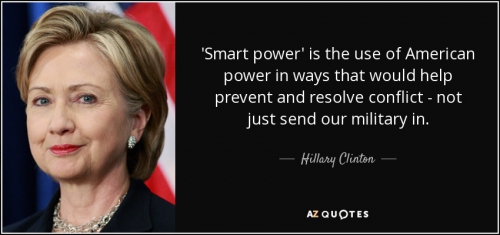
L’indépendance nucléaire de la France est en question. Au prix d’une politique d’intimidation américaine qui touche au « soft terrorism », au prix aussi de trahisons manifestes ou plus cachées de la part de dirigeants privés et publics « français », Alstom énergie a été vendu – bradé plutôt – à General Electric. Les liens entre General Electric et l’Etat profond américain sont attestés par l’étroitesse de ses liens avec The American Chamber of Commerce). Depuis lors, l’entretien des turbines des moteurs à propulsion nucléaire de la marine française dépend de General Electric. Depuis lors aussi, le tandem Areva-Astom qui avait bien fonctionné est déstabilisé, et le nouvel acteur pilote du nucléaire, EDF, fait l’objet d’une étrange convergence des vents contraires ; note financière abaissée, ennuis techniques, arrêt de réacteurs, partenariats déstabilisés, et, par hasard sans doute, réactivation de campagnes antinucléaires par des Fondations venues du nord ou des ONG généreusement financées depuis Washington. Faut-il en conclure que ce qui reste du non alignement de la politique française, dérange encore, ou bien qu’il faut réduire la France au rang de vassal des seules puissances nucléaires inévitables que sont les Etats-Unis, la Russie et la Chine, toutes les autres ( Inde, Pakistan, France, Corée du Nord, voire Israël) devant se voir éliminées du jeu ? Après tout, la Grande Bretagne a bien fait sa soumission à l’ordre militaire américain, pourquoi pas la France?
Il faut aller plus loin. Les signes ici et là se font jour, notamment venant d’officines comme Transparency International, dont l’activité militante semble être de dénoncer des sociétés françaises au procureur américain, tout cela depuis la France, et dans une impunité totale. De nouvelles cibles sont visées. L’eau est stratégique. Les déchets sont stratégiques. Et voilà que les grands fournisseurs de prestations aux collectivités, Engie, Suez, Vinci, d’autres encore, sont ciblés par des dénonciations, visés par des procédures.
L’aéronautique et le spatial sont stratégiques, la France et l’Europe y excellent, et voilà pourquoi il faut paralyser Airbus en attendant que Boeing fasse jeu égal en Iran, voilà pourquoi le Serious Fraud Office (SFO britannique) bloque le financement des crédits à l’exportation d’Airbus, voilà pourquoi l’application des règles « ITAR » qui soumettent à l’approbation des autorités américaines l’exportation de tout engin ou système contenant même le plus infime composant américain, se durcit et se fait menaçante à l’encontre des industriels de l’électronique de défense français. L’alimentation est stratégique, et voilà pourquoi le rachat de Monsanto par Bayer dessine de grandes manœuvres qui vont placer l’agroalimentaire français sous contrôle, mettre fin aux préférences françaises pour les appellations territoriales, les produits sans OGM et une nourriture non artificiellement surchargée en sucres, en gluten et en graisses. L’éducation est stratégique, et les agressions contre le système éducatif français conduites à coup de classements manipulateurs, d’études ciblées, de revues à comité de lecture et de campagnes de désinformation vont substituer aux vieux lycées et collèges, aux vieilles universités et grandes Ecoles, des « net académies » et autres « international schools » chargées de privatiser l’enseignement en distribuant des MBA, des promesses d’emplois mirifiques et non tenues, des crédits pour financer ces MBA et ces promesses, et de somptueux dividendes à leurs initiateurs de la Silicon Valley ( en novembre 2016, l’entreprise Bridge International University qui vend très cher dans les pays les plus pauvres d’Afrique des promesses de formations et d’emploi a été interdite en Ouganda ; parmi ses actionnaires, Mark Zuckerberg et Bill Gates). Il est intéressant de noter que certains acteurs agressifs de la privatisation de l’enseignement ainsi que de l’optimisation fiscale sont reçus en grande pompe dans les palais ministériels et présidentiels français.
L’offensive dépasse le droit, et touche l’ensemble des techniques de domination théorisées par une ancienne candidate à la Présidence des Etats-Unis, Hillary Clinton, sous le nom de « smart power ». Elle fait apparaître les contours encore flous d’une entreprise globale de corruption dont le coup d’Etat réalisé en Ukraine, les opérations de déstabilisation engagées dans les Nations du Proche et du Moyen Orient, et qui n’épargnent pas les Nations européennes ( voir les campagnes d’agitation des banlieues orchestrées depuis l’Ambassade des Etats-Unis en France par M. Marc Rivlin, de 2009 à 2014 ) suggèrent l’ampleur. La campagne présidentielle américaine a fort heureusement permis d’éclairer le cœur du système entourant la Fondation Clinton, un système qui privatise les guerres et vend à la carte le renversement de régimes, la perversion de structures sociales et la destruction d’Etats qui s’opposent à la grande criminalité financière et industrielle. N’est-ce pas là la définition même de la corruption, telle que les Caton, Solon ou Lycurgue l’ont définie ? Ce capitalisme du chaos aura relégué aux antiquités les valises de billets, commissions occultes et autres procédés traditionnels de corruption, pour leur substituer l’action combien plus efficace d’une nébuleuse d’ONG, de Fondations, de think-tanks, qui dispensent bien plus que de l’argent ; de la bonne conscience et de la conformité. Et voilà comment le principe majoritaire est vidé de son sens par l’agitation de minorités agressives et manipulatrices, voilà pourquoi le multiculturalisme et les migrations de masse sont l’outil de destruction massive de l’unité des Nations et de leur capacité de résistance, voilà enfin comment l’hyperpuissance peut mobiliser les moyens de la propagande, du spectacle et des bons sentiments pour obtenir plus que l’obéissance, le consentement.
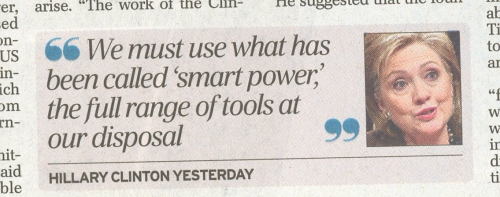
C’est ainsi que la France, que l’Europe, perdent les batailles qu’elles ne veulent pas livrer. Il est comique de voir le Parlement européen se mobiliser contre les agences de presse russes, certes actives, quand la presse française est saturée d’informations filtrées, orientées, ciblées par les Fondations, Ong, think tanks et agences de presse américaines, au point que l’intérêt national devient indiscernable, au point que l’idée même d’indépendance semble indécente. Et qui a parlé de résistance quand des importations américaines aussi étrangères aux traditions françaises qu’Halloween, le Black Friday ou le super Monday envahissent les écrans et les vitrines? Le consentement est le premier objectif du smart power, il annonce bien des défaites après des batailles qui ne seront pas livrées.
Une illustration parlante de la naïveté européenne à ce sujet est donnée par le débarquement de la « Responsabilité sociétale et environnementale » de l’entreprise, dite aussi RSE. Ce concept a été développé dans les années 1990 au sein de fondations et d’ONG diverses, majoritairement anglo-américaines, avec l’objectif explicite de remplacer l’obéissance à la loi par des déclarations publiques. Les multinationales américaines ont suivi avec enthousiasme un mécanisme relayé par les Nations Unies, qui donne lieu à une annexe au rapport annuel des entreprises, n’a pas de caractère contraignant et s’est imposé de manière virale sous la pression de centaines d’officines diverses, puis de directions ad hoc qui ont cette puissante motivation à agir ; justifier leur emploi. Dans la mesure où les critères retenus privilégient la vision américaine de la société comme agrégat de minorités, valorisent la diversité interne et le multiculturalisme. L’ensemble s’est déroulé dans l’inconscience totale des politiques de toutes tendances, et dans la sidération de dirigeants dont aucun n’a suggéré que des critères de responsabilité nationale et environnementale seraient plus adaptés, et plus démocratiques.
Face à cette offensive, des réactions se dessinent. La loi dite « Sapin 2 » devrait justifier auprès du juge américain d’une action résolue des autorités françaises contre les faits de corruption ; après sa validation probable par le Conseil constitutionnel, tout dépendra de son application effective par des tribunaux par ailleurs en manque criant de moyens, et par des services d’enquête spécialisés qui sont absents, ou absorbés par d’autres priorités. La norme ISO de prévention de la corruption, publiée à l’automne 2016, suscite l’intérêt de nombre d’entreprises, qui y voient notamment l’occasion d’une meilleure valorisation auprès des fonds d’investissement, un sujet auquel la BPI est aussi sensible. Le rapport Berger Lellouche, excellent par sa franchise et surprenant par les évolutions personnelles dont il témoigne, ne vaut que par les conséquences et les contre-mesures que le futur gouvernement voudra bien lui donner ; il est intéressant qu’il suggère une toute autre voie que celle de la soumission, celle de la confrontation. Si la France n’en a pas, ou plus, les moyens l’Union européenne les a. Les sanctions annoncées contre Apple et ses pratiques d’optimisation fiscale en Irlande par la Commissaire Margrete Verstaeger montrent la voie d’une réaction européenne à ce qu’il faut bien appeler un détournement américain ; elle illustre une voie qu’ont emprunté, et suivi avec succès les Chinois, qui ont su faire comprendre aux Etats-Unis qu’il n’était pas question qu’ils fassent la loi à leurs entreprises. Quelques incarcérations justement calculées de dirigeants de sociétés américaines, quelques mesures de rétorsion à l’encontre des intérêts américains, et surtout, le classement de la comptabilité des entreprises en « secret d’Etat », dont la divulgation est passible de la peine de mort, ont été d’une efficacité certaine. L’Union européenne saura-t-elle suivre et amplifier l’action de la Commissaire, au moment même où la ratification du CETA (traité de libre échange avec le Canada ) ouvre le boulevard de l’arbitrage privé aux sociétés américaines, dont le négociateur européen semble avoir oublié qu’elles sont toutes présentes au Canada, de sorte que le CETA dispense du TTIP - et aura les mêmes conséquences ; assurer la primauté des sociétés privées et des investisseurs sur les Nations et les Etats ?
Pour conclure…
Il est utile de clarifier la logique développée par les autorités américaines. Car elle est soutenue par la logique économique et financière ; que le monde serait plus simple si une seule loi s’appliquait partout ! Car elles excellent à répandre le dilemme ; nous, ou la Chine. Demain sans doute, c’est contre la montée en puissance des exigences chinoises, contre leurs propres règles du jeu et leur ingérence qu’il faudra se mobiliser, comme il faut se mobiliser contre tout universalisme qui prétend unifier le monde, et qui n’est que l’expression de provinces qui se prennent pour le monde.
Que valait Alcatel pour la Chine, que valait Alstom Energie pour la Chine ? Beaucoup sans doute, mais le débat n’est pas là. Il est que, Etats-Unis, Chine ou Touamotou en présence, les choix de la France soient les choix des Français, des choix qui servent l’intérêt de la France et des Français, d’eux seuls, d’eux d’abord. Et le débat est que, selon l’affirmation de Claude Lévi-Strauss, il n’est de barbares que ceux qui croient qu’il y a des barbares – et l’unilatéralisme américain nous fait plonger dans une nouvelle barbarie. Qu’est-ce que la civilisation, sinon l’apaisement des différences ?
Il faut chercher plus loin, et entrer dans l’évaluation des intérêts. La Chine a su fermer les portes au procureur américain. L’Inde, la Russie, font de même. Et les pays de l’Organisation de Coopération de Shanghai disposent de systèmes de compensation, de paiement et de règlement internationaux, et même d’un marché de l’or, totalement hors du dollar, du territoire américain, et de toute dépendance aux autorités américaines. La Russie impose que les hébergeurs de services en ligne traitant des données de citoyens russes disposent de serveurs localisés en Russie. Ce qui signifie qu’une entreprise peut travailler avec les deux tiers de la population mondiale et bientôt la moitié de l’économie mondiale, sans s’exposer au procureur américain. De sorte que le pari peut être pris ; combien d’années faut-il avant qu’une banque européenne, avant qu’une société du CAC40, avant qu’une PME « gazelle » fassent leur choix et, tout bien pesé et compté, décident de s’affranchir de tout lien avec les Etats-Unis, et de partir à la redécouverte du reste du monde ?
L’issue du jeu de l’obéissance auquel l’ubris de l’hyperpuissance condamne les Etats-Unis est plus incertaine que jamais après l’élection de Donald Trump. Car se fait jour une toute autre perspective ; celle que les Etats-Unis mettent d’eux-mêmes fin à une politique de lutte anti-corruption que le candidat élu avait qualifié de « stupide et irréaliste » pendant sa campagne. Il restera alors aux Etats les plus agiles à démanteler des législations d’importation, et aux autres, à se draper dans une vertu outragée et déçue. A chacun de parier sur la position de la France.
Hervé Juvin,
Essayiste et écrivain français,
Président de NATPOL, «Sécurité des opérations, résilience des organisations, intelligence de la diversité »



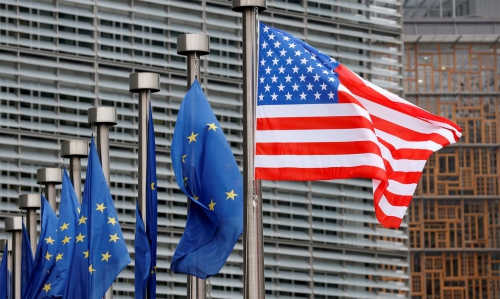

 del.icio.us
del.icio.us
 Digg
Digg

